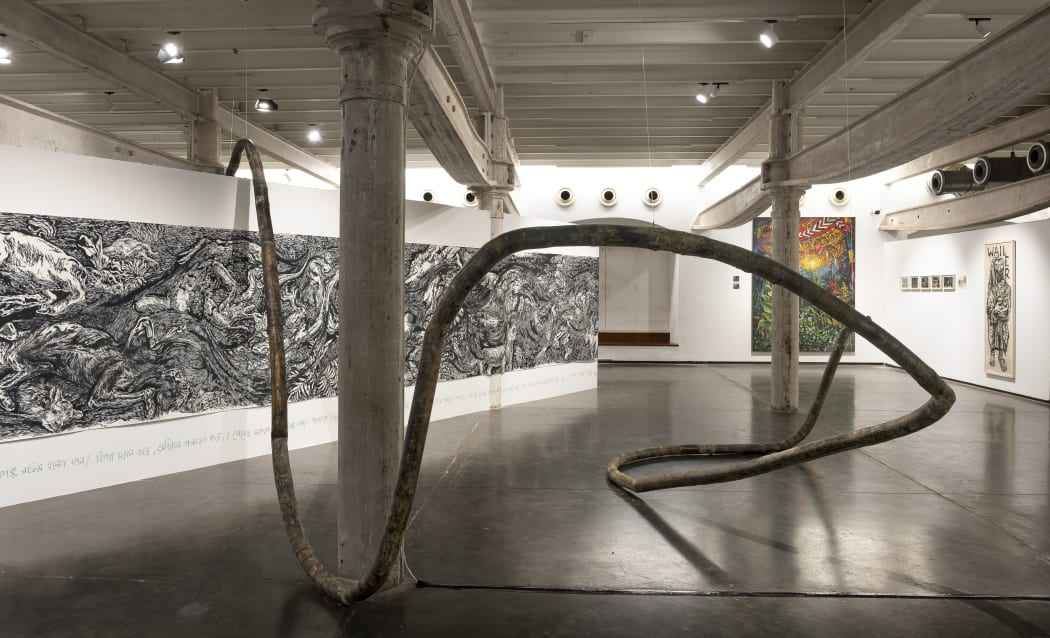
Poem hand written by Anupam Roy below the 35 foot drawings ‘...ing _10’ and ‘…ing _11’ in his native Bengali
A resplendent fish once flew up
in the air only to dive back again in the blue, clear water
And this pleasurable sight
Ripened the fruit with an aching bloody blush.
Threatened cranes fly, ceaselessly they flee
Since everyone knows that beneath their soft white down
There’s warm, warm flesh and fat.
Short rest stops by fatigued hillsides
All water-songs evaporate, and yet
At this time, you oh sea-creature, you…you…
Oh look at the scattered diseased trees
The expansive vegetation of all this world
Long, long sighs of exhaustion rage through it all;
Yet the trees and flowering plants stay apart in their plots
Dreaming of breathless unions.
— Binoy Majumdar (translated by Supurna Dasgupta from Bengali - published in DoubleSpeak mag)
Land is not inert; it is a historically sedimented, sensorial and semiotic matrix where life, language, and affects are co-constituted. Its contours shape the movement of bodies, seeds, waters, and life-stories, while language shapes and is shaped by the textures of soil and life-forms, the rhythms of labour, and the ciphers of seasonality.
From everyday idioms to cosmologies of belonging, this immanent language structures how land is perceived, narrated, and valued and how cohabitation is imagined.

...ing_02, 96 x 72 inches, Oil on canvas, 2023-2025
Sovereignty is a relational ontology grounded in custodianship, cosmological entanglement, and subsistence practices, emerging from an organic, non-extractive reciprocity with the land. Belonging here is enacted through long kinship with nonhuman entities.
The onset of colonial grammars or capitalist nomenclatures subsumed these situated semiotic ecologies, flattening them, producing epistemic dispossession and interrupting historic bonds of land, life, and expression. Caste society also inscribed anti-ecological partitioning of access, labour, and proximity to nature.
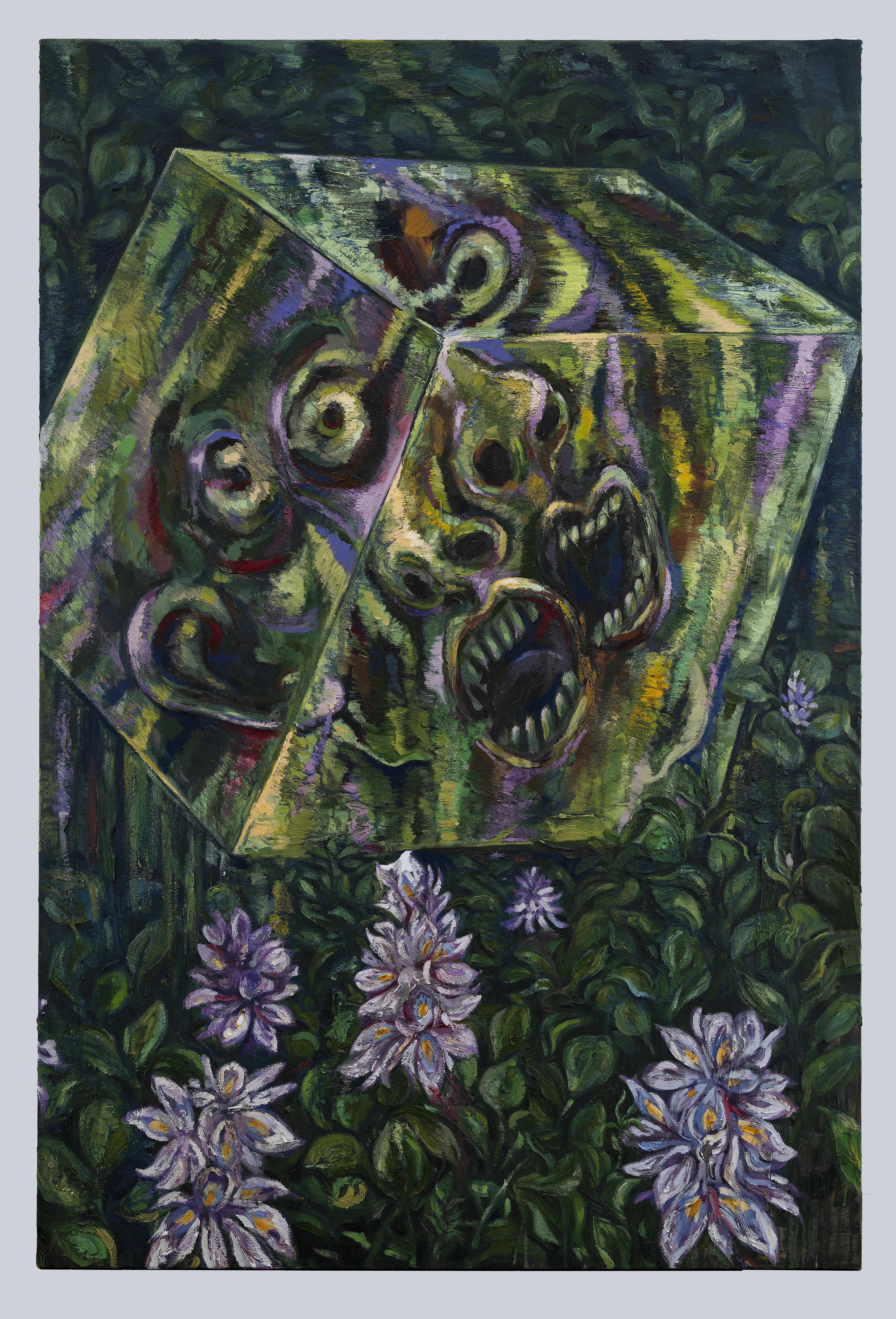
...ing_08, 72x 48 inches, Oil on canvas, 2024-2025
Their reflections appear in colonial cartographies and modernist abstractions, where imagining landscape becomes a key site of technologies of power, an incessant longing for terra incognita for mapping, aestheticizing and expansionism.
Violence of dispossession, enclosure, erosion, blockage and extraction lie veiled under regimes of visual representation :
Rendering land as the picturesque void, a surface emptied of its lived ecologies, levelling the language of everyday workmanship, and excising its rights-bearing histories.
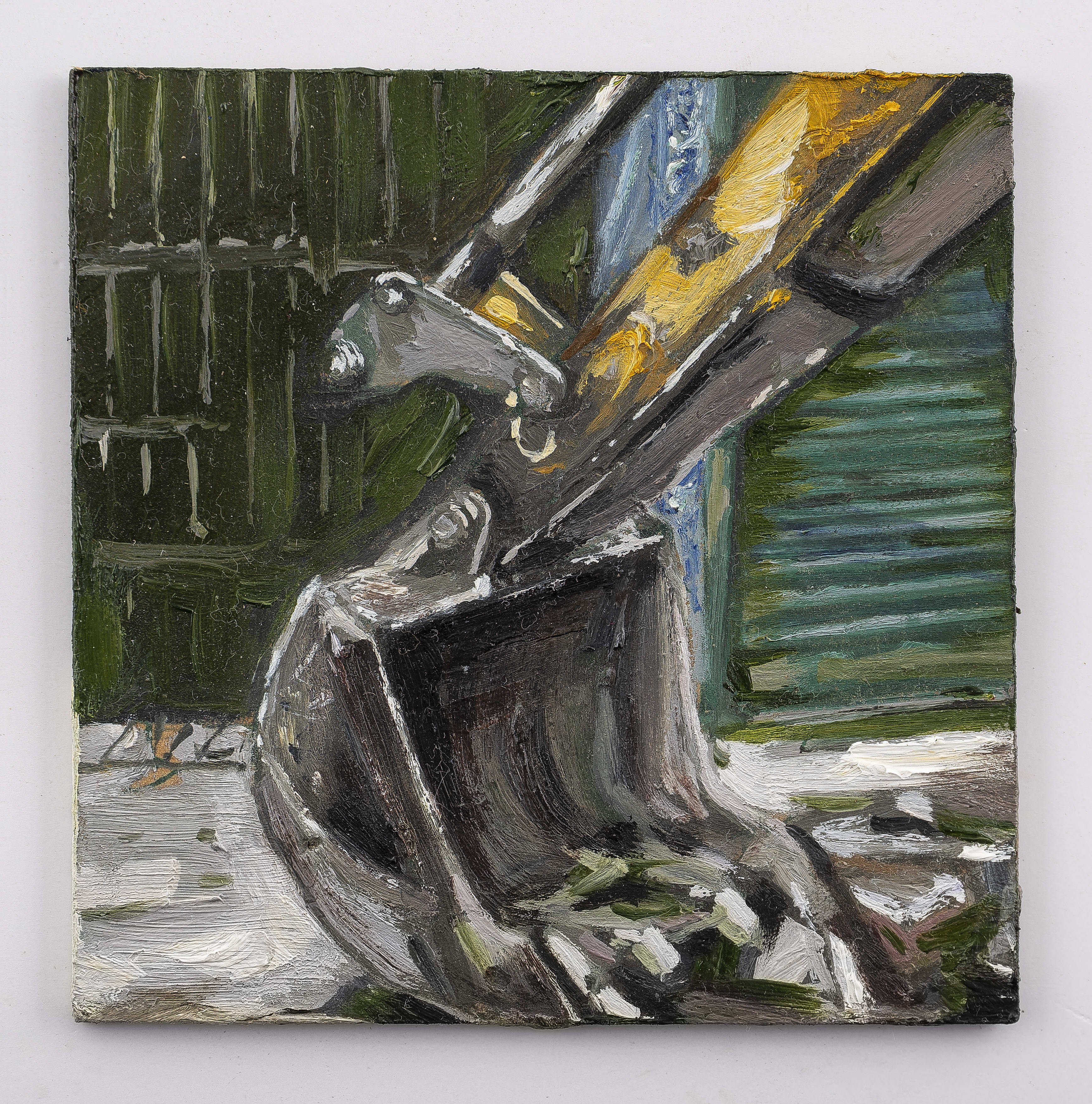
...ing_19, 4x4 inches, Oil on masonite board, 2025
Culturizing land; as heritage without politics; as sceneries without sovereignty; ensuing hegemonic anointing and sanctification of language.
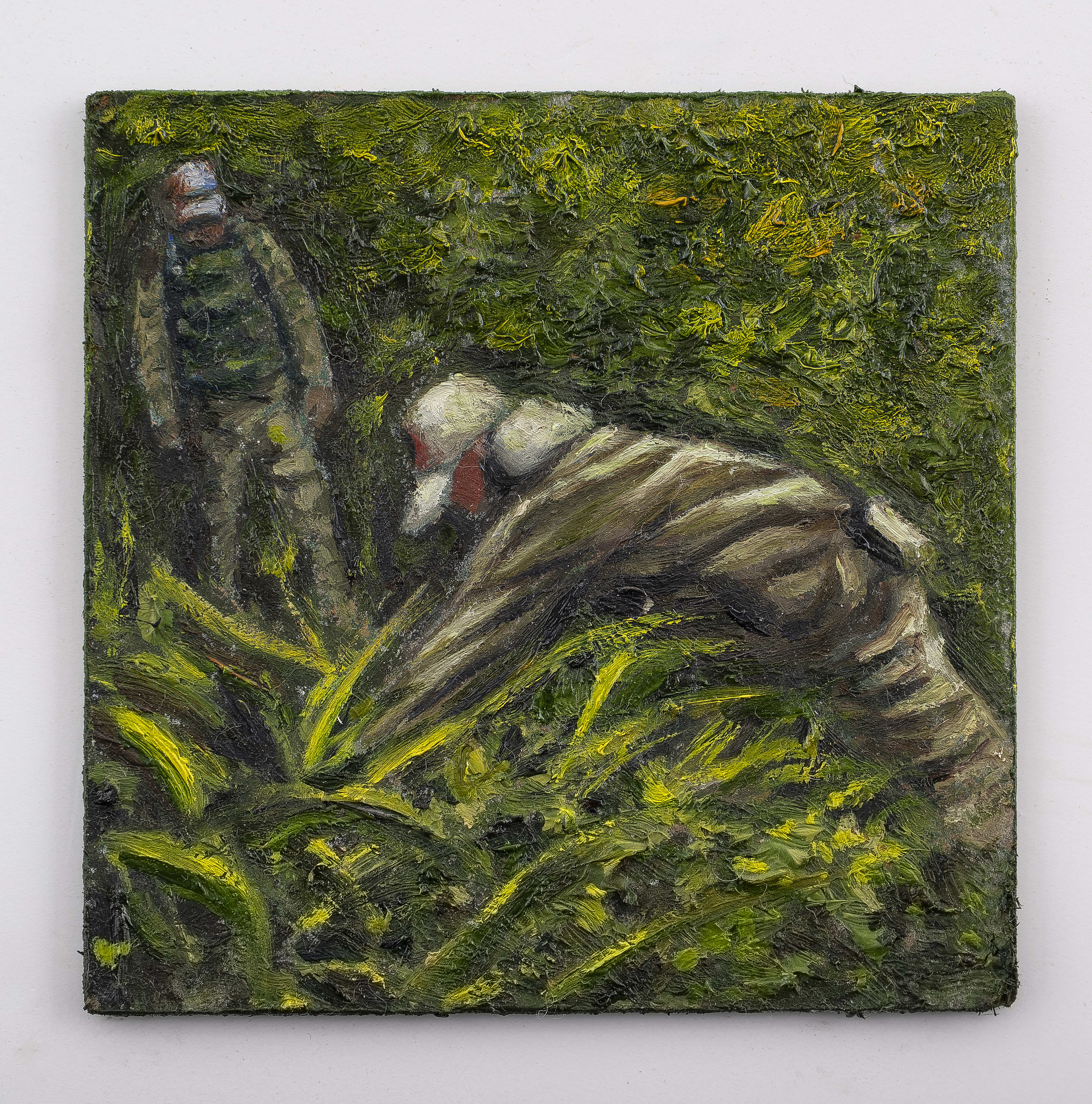
...ing_20, 4x4 inches, Oil on masonite board, 2025
Itemizing land as divisible asset—acquiescent to special economic regimes, and developmentalist logics, while post-truth rhetorics consume language and permeate everyday speech, they converge with the State and its private militias to bulldoze lifeworlds under the pretext of legality.
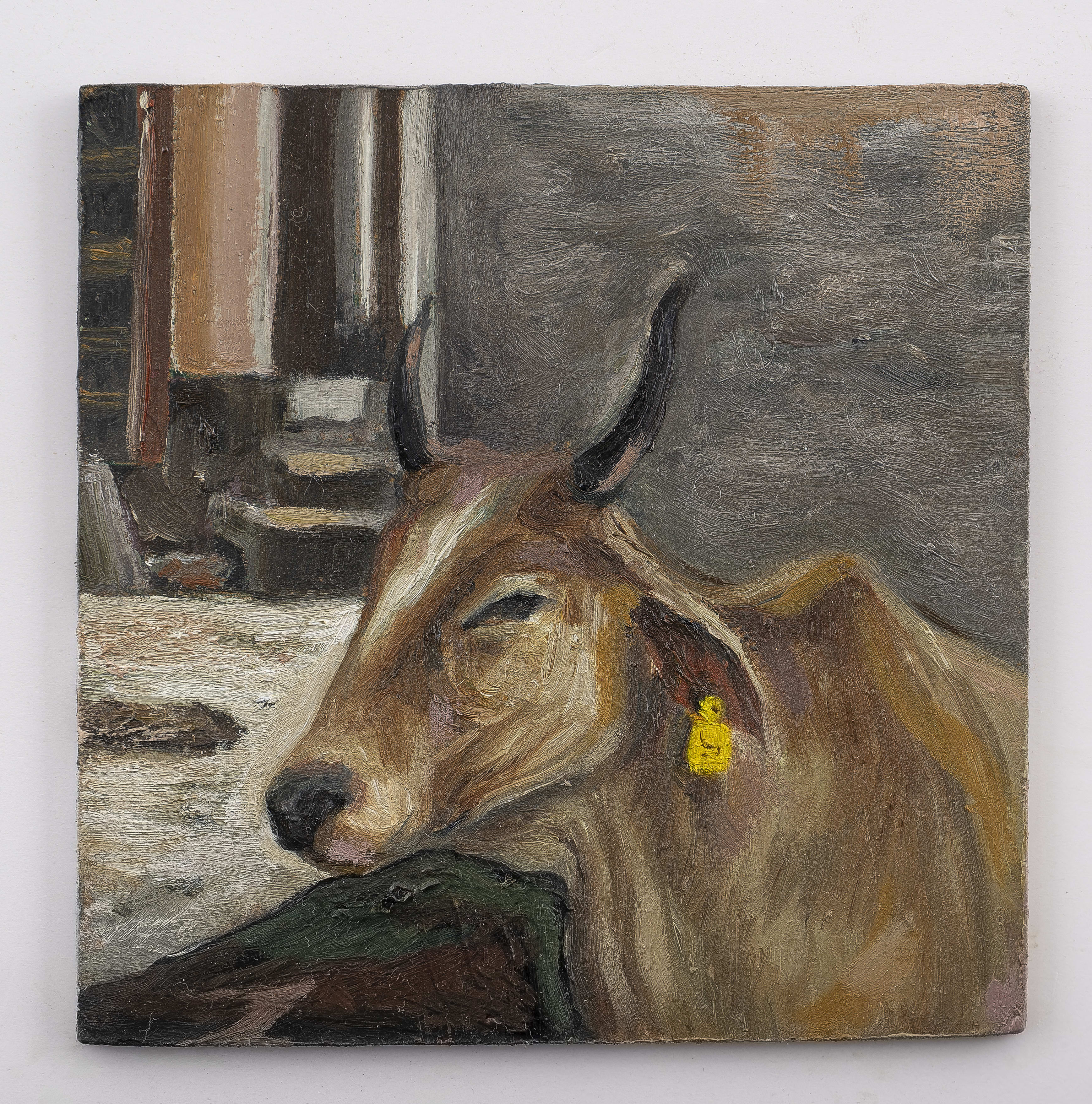
...ing_24,4x4 inches, Oil on masonite board, 2025
The “ing” verbs signal continuous processes of appropriation and control over land and resources, emphasizing ongoingness of the relentless exertions of power.
At the peak of this necroecological hour, imagining a language rooted in the semiotic matrix of land, constituting and imagining a counter-hegemonic presence and praxis-sustaining polysemic infrastructure of sensing and relating, remains critically urgent. Drawing lineages to language that have carried the murmurs of resistance, whispering through fields and forests, encrypting refusal in idioms of soil and season, inscribing our insurgent memories across epochs of conquest.

...ing_03, 96x72 inches, Oil on canvas, 2023-2025
Our terrains still speak in multiplicities, upholding the polyphonic archives of lives lived, subverting the homogenizing grammars and syntactic regimes of accumulation.
— Pinak Banik
I sow trees and poems
In this forest, on this hill, I’m growing
Some poets, some poems, some stories,
Some novels, some plays, some artists.
Some chisels, some hammers, some colors, some brushes
And to make life better
Some thinkers, some scientists,
Certainly some critics,
Some revolutionaries
Yes, I’m a poet saving forests, hills, rivers
Trees - plants,
From the rocky grammar of the mountains,
With greening language, with greenery itself,
Through the camera of a pen
I am making a film on poetry.
Acknowledgements:
Thank you to Binoy Majumdar for his powerful poetry, to Supurna Dasgupta and Doublespeak Magazine for translating and publishing it; Thank you to Mahadev Toppo for his greenish poetry, to Dr. Dilip Girhe for bringing it to light, and the Addivasi Jivan Sangharsh for supporting it. Finally, thanks to Anupam Roy and Pinak Banik for their art and writing.
Citations:
Doublespeakmag, V. a. P. B. (2022, December 30). Supurna Dasgupta‘s translation of Binoy Majumdar’s poem: A Resplendent Fish (Bengali to English). DoubleSpeak. https://dsmag.in/2022/12/29/supurna-dasguptas-translation-of-binoy-majumdars-poem-a-resplendent-fish-bengali-to-english/
Girhe, D. G. (2024, August 17). Mahadev Toppo ki Kavyabhasha :Mein jangal ka kavi. Aadivasi Jivan Sangharsh. Retrieved September 22, 2025, from https://www.aadiwasijivansanghrsh.com/2024/08/mahadev-toppo-ki-kavyabhasha-mein.html#google_vignette

